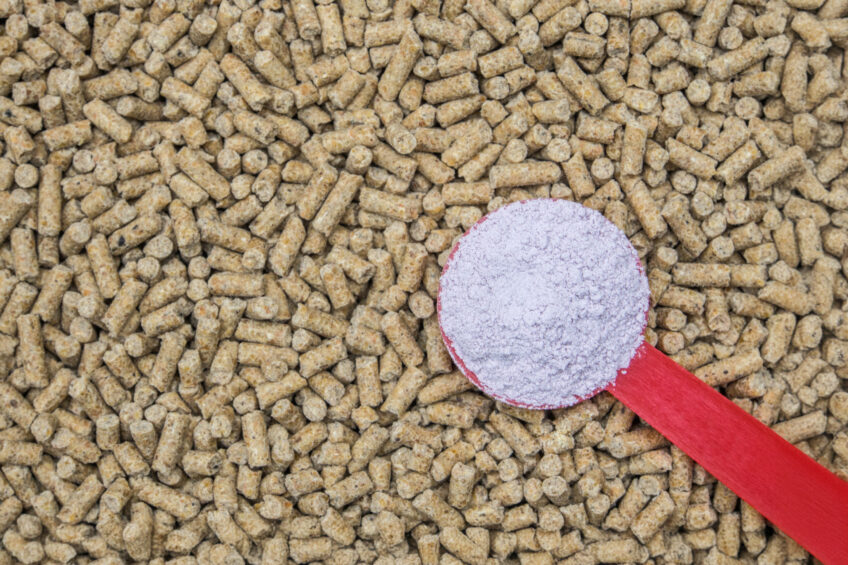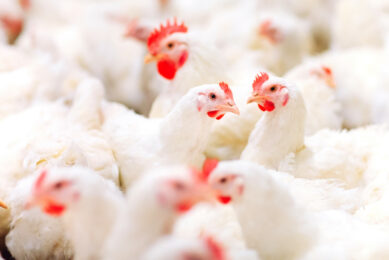Top-10 feed additives to improve gut health

Disturbances in the gut microbial ecosystem during pig rearing can compromise gut health, welfare and production performance. The nutritional components of pig diets can be adjusted using various feed additives to restore gut microbial balance. This article discusses the top-10 feed additives to restore gut microbial balance and improve gut health — in random order.
 Lipids
Lipids
Polyunsaturated fatty acids reduce gut endotoxin transport and endotoxemia compared with saturated fat supplementation. Omega-3 polyunsaturated fatty acids supplementation increases beneficial commensal organisms and decreases pathogenic bacteria in the caecum of pigs, thus improving gut health.
 Selenium
Selenium
Dietary selenium supplementation optimises gut microbiota by increasing health-promoting bacteria, including Lactobacillus and Faecalibacterium, and decreasing undesirable bacteria, including Bacteroides and Clostridia. Low selenium intake makes pigs more susceptible to infection by pathogens such as Salmonella Typhimurium. In addition, dietary supplementation with selenium increases the abundance of Ruminococcaceae and Phascolarctobacterium, two important producers of short chain fatty acids, thus improving gut health.
 Copper
Copper
Dietary supplementation of copper promotes gut growth and reduces the frequency of diarrhoea. In addition, copper supplementation decreases the relative abundance of pathogenic bacteria including Streptococcus, Enterobacter and E. coli in weanling pigs. In growing pigs, organic form of copper increases the relative abundances of Prevotella, Lactobacillus and Megasphaera thus improving gut health.
 Zinc oxide
Zinc oxide
Zinc oxide, an inorganic compound of zinc, is an effective feed additive with antimicrobial properties when administered at the pharmaceutical level. Zinc oxide reduces post-weaning diarrhoea incidence by producing reactive oxygen species which cause pathogenic bacteria death, although high levels of zinc oxide accumulate in the liver, pancreas and kidney, thus negatively impact pig health. In addition, zinc oxide downregulates the expression of inflammatory genes and relieves weanling-induced gut injury. Furthermore, zinc oxide promotes growth performance, improves gut morphology and permeability, enhances the gut barrier function and adjusts gut microbiota structure post-weaning.
In the European Union, in Canada and to a lesser extent China, the maximum inclusion rates of use of pharmacological levels of zinc oxide have been severely reduced for environmental reasons and for reasons of antibiotic resistance.
 Organic acids
Organic acids
Organic acids are used as feed additives to modulate microbial fermentations of nutrients or metabolites available to the host. In addition, organic acids directly lower environmental pH through the release of hydrogen ions, thus preventing the proliferation of acid-sensitive bacteria. Formic acid or its salts increases acetic acid, and decreases lactic acid concentrations in both ileum and colon contents.
Supplementation of 10% malic, 13% citric and 17% fumaric acids to the diet of growing finishing pigs decreases E. coli counts and increases Lactobacillus counts in the gut. Feeding weaned piglets with 4.1% propionic, 9.5% phosphoric, 10.2% lactic and 17.2% formic acids increases Bacilli and Lactobacilli concentrations and reduces Salmonella and E. coli counts. Moreover, weaners fed on diets containing lactic and fumaric acids have lower colon E. coli.
 Prebiotics
Prebiotics
Supplementing prebiotics in the pig diet provides a stable gut microbial ecosystem by increasing the relative abundance of beneficial bacteria, such as Lactobacillus, and decreasing the counts of potentially harmful groups, such as Clostridium and Enterobacteriaceae. In addition, feeding prebiotics reduces the risk of dysbiosis and post-weaning diarrhoea.
Prebiotics, such as galacto-oligosaccharides, fructo-oligosaccharides, oligofructose, chicory fibre, and inulin, promote digestibility of nutrients, support the immune system, improve mineral absorption, and affect energy and amino acid balance of the pig.
 Probiotics
Probiotics
Probiotics, such as Lactobacillus, Bifidobacterium, Enterococcus, Streptococcus and Saccharomyces, reduce the relative abundance of pathogenic bacteria, such E. coli, thus reducing incidences of diarrhoea. In addition, probiotics improve immunity and gut mucosal barrier function, thus inhibiting the growth of pathogenic microorganisms. Lactic acid bacteria improve the gut function by balancing gut microbiota, and degrading the macromolecular substances that are not easily absorbed in the body. Oligosaccharides promote the formation of beneficial gut and maintain gut health.
 Essential oils
Essential oils
Essential oils increase the relative abundance of Lactobacillus and decrease the relative abundance of E. coli or total coliforms. In addition, adding essential oils to the nursery pig diet improves gut health, enhances feed intake and increases performance and average daily gain post-weaning. A cocktail of carvacrol, cinnamaldehyde and capsicum oleoresin enhances Lactobacilli population and lymphocytes in the gut of early-weaned piglets.
 Amino acids
Amino acids
Dietary amino acids modulate gut structure, function and gut microbiota diversity. Excessive dietary amino acids are fermented in the lower gut and create toxic products associated with potential pathogenic bacteria growth. Amino acids metabolites, such as butyrate and indole, improve gut physiology; however, other metabolites, such as ammonia, hydrogen sulphide, and nitrite, have detrimental effects on the epithelia and gut mucosa.
Glutamic acid and glutamine provide oxidative fuels for rapidly dividing gut cells and mucosa; thus, enhancing the gut cells turnover rate in young pigs.
Dietary arginine supplementation reduces gut tissue damage, promotes gut mucosa healing and reverses gut dysfunction.
In nursery pigs, methionine improves gut morphology maintenance by increasing villus height, reducing oxidative stress and improving glutathione production in the mucosa cells. Moreover, methionine decreases bacteria fermentation by improving nutrient digestion and absorption and leaving less substrates for bacteria to use.
Threonine plays a key role in mucin synthesis and gut barrier integrity maintenance, and is critical for maintaining gut morphology, development and health.
 Carbohydrates
Carbohydrates
Wheat starch, and beet pulp stimulate microbial fermentation, increase beneficial bacteria in gut microbiota, and promote a stable and healthy gut microbial ecosystem. Formulating complex diets comprised of barley increases the uniformity of gut microbiota and gut health post-weaning. Wheat bran fibre increases villus height and villus to crypt depth ratio in the ileum and colon in nursery and growing-finishing pigs. Supplementing pea, maize, and wheat bran increases the population of Lactobacillus and Bifidobacterium but reduces E. coli counts in ileal and colonic digesta. On the other hand, soybean fibre reduces the relative abundance of Lactobacillus and Bifidobacterium and increases the population of E. coli and the concentration of colon volatile fatty acid.











